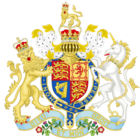Slave Trade Act 1873 facts for kids
| Act of Parliament | |

|
|
| Long title | An Act for consolidating with Amendments the Acts for carrying into effect Treaties for the more effectual Suppression of the Slave Trade, and for other purposes connected with the Slave Trade. |
|---|---|
| Citation | 36 & 37 Vict. c. 88 |
| Dates | |
| Royal assent | 5 August 1873 |
| Other legislation | |
| Repeals/revokes |
|
|
Status: Amended
|
|
| Text of statute as originally enacted | |
| Revised text of statute as amended | |
| Text of the Slave Trade Act 1873 as in force today (including any amendments) within the United Kingdom, from legislation.gov.uk | |
The Slave Trade Act 1873 (36 & 37 Vict. c. 88) was an important law passed by the Parliament of the United Kingdom in 1873. Its main goal was to help stop the international trade of enslaved people. This Act brought together and updated many older laws that aimed to end the slave trade. It showed Britain's continued effort to fight against this cruel practice around the world.
Contents
Stopping the Slave Trade
The Slave Trade Act of 1873 was a key step in Britain's long fight against the buying and selling of people. By this time, slavery itself had been made illegal in the British Empire. However, the international trade of enslaved people still continued in other parts of the world. This Act aimed to strengthen Britain's power to stop this trade on the high seas.
The Horrors of the Slave Trade
The slave trade was a terrible system where people were captured, bought, and sold as property. They were forced to work without pay and treated very badly. Millions of people, especially from Africa, were taken from their homes and shipped across oceans to be enslaved. This trade caused immense suffering and broke up families and communities.
Britain's Fight Against Slavery
Britain had a complex history with slavery. For many years, British ships were heavily involved in the transatlantic slave trade. However, by the early 1800s, a strong movement against slavery grew in Britain. This movement, called abolitionism, pushed for laws to end both the trade and the practice of slavery.
Key Laws Before 1873
- Slave Trade Act 1807: This was a major step. It made the slave trade illegal throughout the British Empire. This meant British ships could no longer carry enslaved people.
- Slave Trade Act 1824: This Act made participating in the slave trade a serious crime, punishable by death.
- Slavery Abolition Act 1833: This landmark law finally abolished slavery itself in most of the British Empire. This meant that enslaved people in British colonies were set free.
Why Was the 1873 Act Needed?
Even after slavery was abolished in the British Empire, the international slave trade continued. Other countries were still involved in it, and some British citizens might have tried to secretly participate. The 1873 Act was designed to:
- Consolidate Laws: It combined many older laws about the slave trade into one clear document. This made it easier to understand and enforce.
- Amend and Update: It made changes to these older laws to make them more effective. This included updating rules for British naval ships that were trying to catch slave traders.
- Enforce Treaties: Britain had signed agreements (treaties) with other countries to work together to stop the slave trade. This Act helped carry out those agreements. It gave British courts and officials the power to act against slave traders caught anywhere.
Stopping Slave Ships
The Act gave British naval officers more power to stop and search ships suspected of carrying enslaved people. If a ship was found to be involved in the slave trade, it could be seized, and the people on board could be freed. This was a dangerous but important job for the Royal Navy.
Long-Term Impact
The Slave Trade Act 1873 was part of a global effort to end slavery and the slave trade completely. While it took many more years for slavery to be abolished worldwide, this Act showed Britain's ongoing commitment. It helped to weaken the international networks that profited from human suffering.
See also

